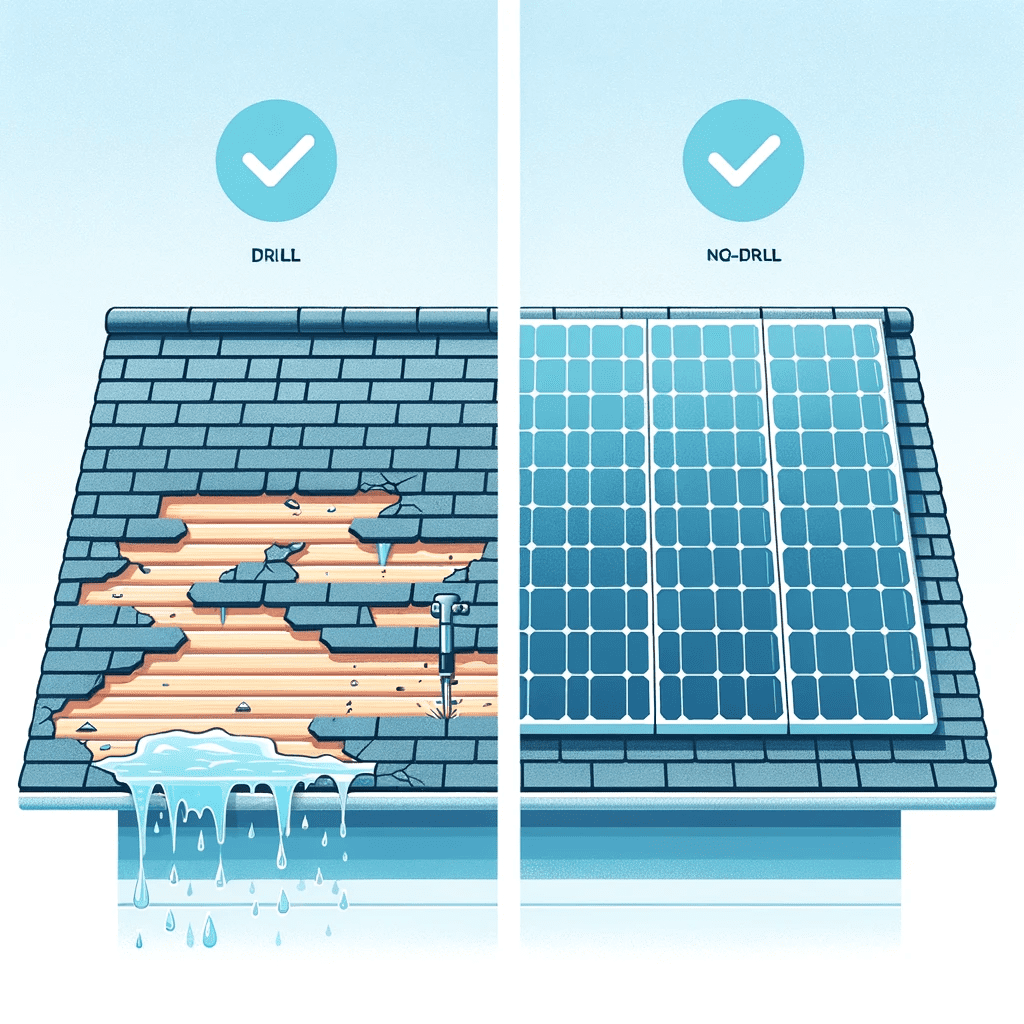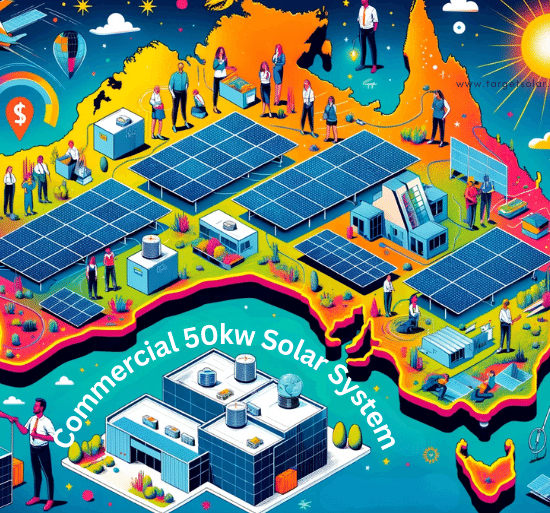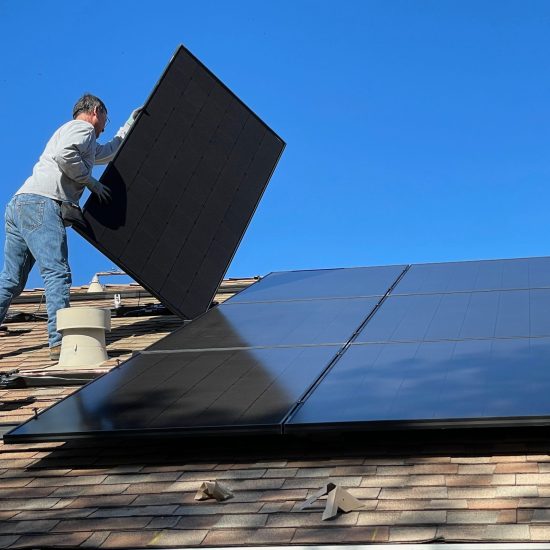The Evolution of Solar: A Seamless Transition to Non-Intrusive Rooftop Installations
As the global paradigm shifts towards sustainable energy solutions, a particular trend is gaining prominence within Australia—rooftop solar energy systems. The adoption rate is soaring, yet there is a crucial factor often overlooked: the structural impact of traditional solar panel installations on rooftops. What if we told you that it is now possible to transition to solar energy without compromising the integrity of your building’s roof?
Significance of the Topic: With Australia being at the forefront of solar energy adoption, the question of how to implement these systems without hindering structural integrity has become of paramount importance. Traditional methods involving roof penetration are increasingly viewed as less than ideal, owing to the potential for long-term damage and the complexity of installation. This necessitates a closer look at alternatives that not only solve these issues but also align with the national agenda of expanding rooftop solar penetration.
This article aims to demystify the range of no-drill solar panel installation methods available in the market, offering a comprehensive guide for businesses and homeowners alike who are seeking to make an informed decision in this vital area.
In the forthcoming sections, we shall examine a spectrum of non-penetrating solar installation methods, from Ballasted Mounting systems suitable for flat commercial roofs to novel technologies such as SolarPod Crown and EcoSoch Solar. Each method will be scrutinized for its advantages, drawbacks, and ideal use-cases, allowing for a nuanced understanding of how best to integrate solar solutions into various building types, thereby contributing to the rising rooftop solar penetration rates in Australia.
The Importance of Choosing the Right Installation Method
Navigating the complex landscape of solar panel installations requires an intricate understanding of not just the technologies available, but also the challenges and benefits associated with each. The method you choose directly impacts both the effectiveness of your solar energy system and the longevity of your building’s structural integrity. This makes the selection process far from trivial; it is, in fact, a critical business decision with long-term implications.
Why Traditional Methods Are Challenging
Roof Damage: One of the most prevalent concerns with traditional methods is the physical penetration of the roof, which inherently brings the risk of structural compromise. Punctures in the roofing material can lead to vulnerabilities that might not manifest immediately but can result in significant issues over time, such as water infiltration.
Leaks: The specter of leaks looms large over traditional installation methods. Even with watertight sealing, the very nature of creating holes in a rooftop for installation can act as a catalyst for water damage, particularly in regions with volatile weather conditions.
Given these drawbacks, it’s apparent that traditional methods, although effective, come with their own set of challenges that can have far-reaching implications for the building’s integrity and maintenance costs.
Advantages of No-Drill Installations
Versatility: Non-penetrating systems are exceptionally adaptable and can be fitted onto a wide range of roof types. Whether you’re dealing with flat commercial rooftops or slanted residential structures, there is likely a no-drill solution that meets your needs.
Safety: By avoiding the need to penetrate the roof, these systems significantly reduce the risk of structural damage and leaks, providing a more secure and long-lasting solution. This is particularly crucial for commercial establishments where any form of structural compromise could have cascading effects on operations and liability.
Convenience: The ease of installation for no-drill systems often translates to quicker project timelines and reduced labor costs. Moreover, they simplify the approval process, as many building codes and regulations look favorably upon non-intrusive installation methods.
By closely examining the benefits and drawbacks of each installation method, organizations and homeowners alike can make more informed decisions, perfectly aligning their choice with both their energy goals and structural constraints. In a market as rapidly expanding as Australia’s rooftop solar sector, making the right installation choice is not just wise—it’s essential for achieving long-term sustainability and return on investment.
So, are you ready to make an informed choice that will not only propel you into the era of sustainable energy but also preserve the integrity of your valuable real estate assets?
Types of Non-Penetrating Solar Installation Systems
2.1 Ballasted Mounting
How it Works: Ballasted mounting systems employ heavy concrete blocks or similar ballasting materials to secure the solar panels in place, negating the need for roof penetration. They are predominantly designed for flat roofs and are anchored down by the weight of the ballasts.
Pros & Cons:
Pros
- Quick and straightforward installation
- No risk of roof leakage
- Suitable for weight-bearing flat roofs
Cons
- Not ideal for sloped roofs
- Potential for increased roof load
Ideal Scenarios: Ballasted Mounting systems are best suited for commercial buildings with expansive, flat rooftops capable of bearing additional weight.
2.2 Solar Stack
How it Works: Solar Stack uses a specialized foam adhesive that adheres the solar panels directly to the roof, eliminating the need for drilling.
Pros & Cons:
Pros
- Highly adaptable to various roof types
- Low-impact, preserves roof integrity
- Quick installation
Cons
- Adhesive strength may vary with weather conditions
- Limited by roof material compatibility
Case Studies or Examples: Companies such as XYZ Corp have successfully adopted Solar Stack, noting reduced installation times and zero incidents of roof damage.
2.3 SolarPod Crown
How it Works: The SolarPod Crown system utilizes a unique aerodynamic structure that wraps around the peak edge of the roof, thus minimizing wind loading.
Pros & Cons:
Pros
- Effective for both flat and sloped roofs
- Wind-resistant due to aerodynamic design
- No roof penetration
Cons
- More complex installation
- Higher upfront costs
Aerodynamic Factors: The aerodynamic design minimizes lift and drag, enhancing wind resistance and making it ideal for regions with high wind speeds.
2.4 Adhesive Based Solutions
How it Works: These systems utilize industrial-strength adhesives to attach solar panels directly to the roof surface.
Pros & Cons:
Pros
- Quick and clean installation
- Versatile, suitable for both sheet and RCC roofs
- No structural damage to the roof
Cons
- Weather-dependent adhesive efficacy
- Not ideal for all roof materials
Sheet vs RCC Roofs: While adhesive solutions can work on both, they tend to offer a stronger bond on RCC roofs.
2.5 Flat Direct System
How it Works: This system uses minimal ballast and features pre-glued foam rubber pads that help the system adhere to the roof surface.
Pros & Cons:
Pros
- Minimal weight addition to the roof
- Quick installation due to pre-glued pads
- No drilling required
Cons
- Limited to flat roofs
- Potential for reduced adhesion over time
Special Features: The pre-glued foam rubber pads expedite the installation process while reducing labor costs.
2.6 S5 Clamps
How it Works: S5 Clamps are designed to attach directly to the standing seams of metal roofs, thus eliminating any need for roof penetration.
Pros & Cons:
Pros
- Ideal for metal roofs with standing seams
- Durable and long-lasting
- Quick and easy installation
Cons
- Limited to specific roof types
- May require specialized tools or expertise
Compatibility: Best suited for buildings with standing seam metal roofs, such as warehouses and factories.
2.7 EcoSoch Solar
How it Works: EcoSoch Solar leverages advanced adhesive-based solutions and unique installation techniques to affix solar panels onto various roof types.
Pros & Cons:
Pros
- Versatile and adaptable
- Minimized risk of roof damage
- High durability
Cons
- Relatively new to the market
- Limited case studies for evaluation
Special Features: EcoSoch incorporates smart technology features, such as real-time monitoring and performance tracking, setting it apart from traditional installation methods.
There you have it—a comprehensive breakdown of non-penetrating solar installation systems, each with its unique pros and cons. By closely evaluating these options against your specific needs and conditions, you’re not just investing in solar energy; you’re investing wisely.
How to Choose the Right System for You
Assessing Your Roof Type
One size doesn’t fit all, especially not when it comes to solar installations. Your choice of a no-drill system will largely depend on the type of roof you have.
- Flat Roofs: Ballasted Mounting and Flat Direct Systems are strong contenders here due to their design focus on flat structures.
- Sloped Roofs: Solar Stack and SolarPod Crown are designed to adapt well to inclines, offering a secure and durable fit.
- Metal Roofs with Standing Seams: If you have a metal roof with standing seams, S5 Clamps could be your go-to solution.
Before making a decision, consult with a structural engineer to evaluate the weight-bearing capacity and structural integrity of your roof.
Budget Considerations
While investing in solar technology provides significant long-term ROI, initial costs can vary significantly between systems.
- Cost-Effective: Ballasted Mounting systems tend to be on the lower end of the cost spectrum.
- Moderate Investment: Adhesive-based systems like Solar Stack and EcoSoch Solar offer a balance between cost and performance.
- Premium Solutions: Systems like SolarPod Crown, with their advanced aerodynamic design, often come at a premium price point.
Include potential maintenance costs in your budgeting. Systems that have fewer moving parts or require less upkeep may be more cost-efficient in the long run.
Longevity and Durability
Your solar panel system isn’t just a purchase; it’s an investment—a long-term one. Here’s how to gauge the longevity and durability of your chosen system:
- Materials: Check the quality of materials used in the installation system. Corrosion-resistant and UV-stable materials add years to your system’s life.
- Warranty: Companies confident in their product’s durability often back it up with a comprehensive warranty. Look for systems with warranties that span at least 10 to 25 years.
- Weather Resistance: Systems that are aerodynamically designed, like SolarPod Crown, or that use high-quality adhesives can withstand a range of environmental conditions, offering better longevity.
- Technological Features: Some advanced systems, like EcoSoch Solar, come with features like real-time monitoring that can help you identify and resolve issues before they become bigger problems, thereby prolonging the system’s life.
Choosing the right solar panel installation system is a multifaceted decision involving structural compatibility, financial planning, and long-term durability. With Australia at the epicenter of the solar energy revolution, making the right choice here doesn’t just put you on the map; it positions you as a leader in adopting sustainable, smart solutions.
Frequently Asked Questions (FAQs)
- What is a Non-Penetrating Solar Installation System?
- A way to install solar panels without drilling into the roof, ensuring structural integrity.
- Why Choose a No-Drill Solar Panel Installation?
- To minimize risks like leaks and structural damage.
- How Do Ballasted Mounting Systems Work?
- These systems use heavy concrete blocks to hold panels in place on flat roofs.
- Are Ballasted Mounting Systems Suitable for Sloped Roofs?
- Generally, they are better suited for flat roofs due to their reliance on weight.
- What is a Solar Stack Installation?
- It uses a specialized foam adhesive to attach panels directly to the roof.
- Is Solar Stack Weather-Dependent?
- Yes, the adhesive strength may vary with weather conditions.
- How Does SolarPod Crown Minimize Wind Loading?
- Through its unique aerodynamic design that wraps around the peak edge of the roof.
- What Are the Costs of Non-Penetrating Solar Installation Systems?
- Costs vary; Ballasted systems are generally more cost-effective, while SolarPod Crown may involve a higher initial investment.
- What are Adhesive-Based Solutions?
- Systems that use industrial-strength adhesives to attach panels to the roof.
- How Do Adhesive-Based Solutions Fare on RCC Roofs?
- They tend to offer a stronger bond compared to sheet roofs.
- What Makes Flat Direct System Unique?
- It uses minimal ballast and pre-glued foam rubber pads for quicker installation.
- Are S5 Clamps Compatible with My Roof Type?
- They are designed for metal roofs with standing seams.
- What is EcoSoch Solar?
- A versatile system that leverages advanced adhesive-based solutions and unique installation techniques.
- How Do I Assess My Roof Type for Solar Installation?
- Consult with a structural engineer to determine the best fit for your specific roof type.
- What Budget Considerations Should I Keep in Mind?
- Include both initial setup costs and potential long-term maintenance expenses.
- How Do I Ensure Longevity and Durability of My Installation?
- Look for quality materials, comprehensive warranties, and weather-resistant designs.
- What is a Solar Ready Electrical Panel?
- A pre-configured electrical panel designed to easily integrate with solar energy systems.
- Can I Install Solar Panels on a Roof Without Drilling in Australia?
- Yes, there are multiple non-penetrating installation options available in the Australian market.
- How Does Australia’s Climate Impact My Choice of Installation?
- Aerodynamic and adhesive-based systems may be more resilient in Australia’s diverse weather conditions.
- How Do I Choose the Right Non-Penetrating Solar Installation System in Australia?
- Consider factors like roof type, budget, and desired longevity to make an informed decision.
Conclusion
You’ve made it to the end of this comprehensive guide, and by now, you should be well-versed in the ins and outs of non-penetrating solar installation systems. To recap, these no-drill methods offer you an array of benefits: from ensuring your roof’s structural integrity to offering easy, quick, and versatile installation options. This isn’t just about adding a sustainable energy source to your home or business; it’s about doing so in a manner that is smart, efficient, and in line with the best that technology has to offer today.
In Australia, where solar energy is more than just a buzzword, opting for non-penetrating solar installation methods places you at the forefront of innovation and sustainability. With a myriad of options discussed in this blog, from Ballasted Mounting to EcoSoch Solar, you’re not just making a choice—you’re making a statement. A statement that echoes responsibility, foresight, and a commitment to a greener future.
Your Next Step is Here and Now
So, what’s next? If this blog has ignited your curiosity, it’s time to turn that interest into action.
- Download Our Comprehensive Guide: Dive even deeper into the world of no-drill solar installations with our exhaustive guide. Get it here.
- Get a Custom Quote: Ready to make the leap? Reach out to us here for a tailored solution that fits your specific needs and budget.
- Share the Knowledge: If you’ve found this information valuable, chances are someone in your network will too. Share this blog and contribute to a more sustainable community.
The choice is in your hands. Whether you’re new to solar technology or looking to upgrade your existing system, make your next move a smart one. Let’s create a brighter, more sustainable future together.





